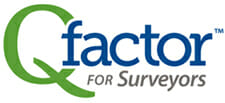Land surveying technology has vastly improved since George Washington first dragged a chain across Mount Vernon.
GPS, CORS, VRS, and now drones have made taking measurements more accurate and efficient. As you adopt greater efficiencies, it makes sense to pass along savings to your clients so you can remain competitive and not be outbid. But are you selling yourself too short? In your enthusiasm to exploit these new efficiencies, don’t forget that you want to realize gains in your own profit, not just reduce the time billed to your client.
Remember to bill for expertise
Land Surveying is a highly specialized field with strict education standards connected to licensing. “Being able to push the right buttons does not equate to a correct measurement,” according to Subsurface Utility Engineer Greg Jefferies. The client isn’t just paying for the latest tech: they are paying for your expertise. Are you charging enough to make a solid return on investment for the equipment you purchased and the training you’ve done to use it? Do your rates reflect the skills, experience, and knowledge you bring to the job? Maybe it’s time for you to do a little research and see what other surveyors in your area and with your specializations are charging.
Factors to consider
Putting together a proposal and an estimate means taking into account many factors: site accessibility, records searches, boundary shape, terrain, and weather conditions. How will the technology you use help you meet these challenges? How will it affect the amount of time you need to dedicate to the project? When deciding what to charge a client, make sure you take into account the investments you have made in terms of equipment, licensing, and training?
Estimating Tools
Thinking through all of these aspects will enable you to set a price for a project that will not only meet the client’s needs but also help you realize greater profits—but it’s a lot to keep track of. Qfactor for Land Surveyor’s powerful planning and estimation tools can help you price your projects fairly and profitably, track your open proposals and project conversion rate, and most importantly, know which proposals and projects are most profitable.
Qfactor is proud to be an Ambassador for Get Kids Into Survey
We put our money where our mouths are. We present in schools to promote surveying as a professional career to high school students.
Consider making a donation to Get Kids into Survey – support the next generation of surveyors. Click here.
MentoringMondays
Qfactor client Trent Keenan leads MentoringMonday every week presenting speakers and topics relevant to being a surveyor in 2025. Check out the next and past topics here: https://mentoringmondays.xyz/






